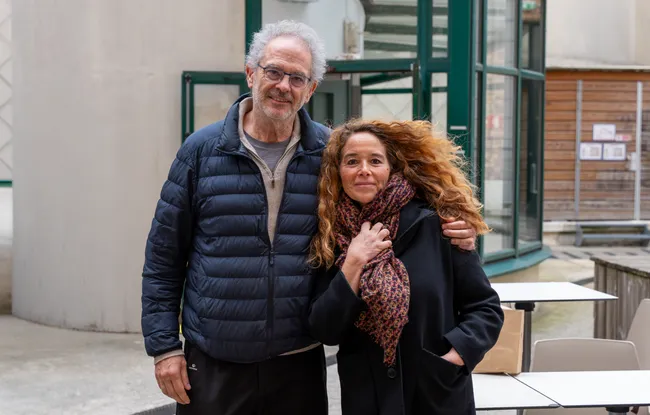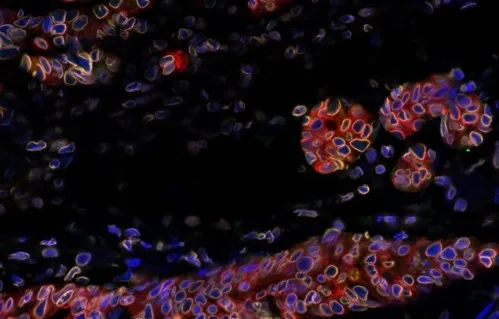- Home >
- Institut Curie News >
- Relapses of breast cancer: discovery of a key cellular resistance mechanism
- In triple-negative breast cancer, one of the most aggressive and difficult cancers to treat, some cells may survive treatment temporarily, which gives rise to relapses.
- Scientists from CNRS, Institut Curie and Université Paris Cité have discovered one of the mechanisms at the origin of their short-lived resistance to treatment, as well as a key molecule that acts as an “on-off switch” regarding the drug tolerance of these so-called “persister” cells.
- This discovery marks an important step towards more preventive medicine that can anticipate and avoid relapses in the most aggressive forms of cancer.
A cellular resistance mechanism at the origin of relapses of triple-negative breast cancer has recently been discovered by scientists from CNRS, Institut Curie and Université Paris Cité. Their findings have been published in Cancer Research, a journal of the American Association for Cancer Research, on 6 November 2025.
Triple-negative breast cancer is one of the most aggressive and difficult cancers to treat. It can initially respond well to therapeutic combinations of chemotherapy, but a tiny minority of tumour cells may manage to tolerate these treatments. These so-called “persister” cells are then able to reform a tumour, causing a relapse of breast cancer in 20 to 30% of cases.
According to the work of a research team led by teams of scientists from CNRS and Institut Curie in the “Dynamique de l'Information Génétique: Bases Fondamentales et Cancer” laboratory (CNRS/Institut Curie/Sorbonne Université)1 and the Département de Recherche Translationnelle at Institut Curie, “persister” cells share a common transcriptional programme from one patient to another, whatever the treatments they have received. The scientists have also identified several molecules implicated in the regulation of this common programme that determine which genes are active or not. Of these molecules, the FOSL1 protein plays a central role as a true “on-off switch” for resistance. Thanks to this non-genetic and reversible adaptation, the cells can modify their functioning and survive treatment before becoming susceptible again thereafter.
These results were obtained from experiments conducted in mice using tumour biopsies collected from eight patients at Institut Curie – a number never previously attained in this type of study. Thanks to sequencing technologies, the scientists were able to analyse the tumours at different stages and to identify the tolerance mechanisms of the tumour cells.
The challenge is now to transform these results into actionable biomarkers and targets. This discovery constitutes an essential step on the path towards more preventive medicine that is able to anticipate and avoid relapses in the most aggressive types of cancer. It also opens the way to new therapeutic strategies which aim not only to eliminate tumour cells but also prevent their entry into a persistent state.

Breast tumour in an animal. The cells are labelled in blue and the keratin 8 molecules in orange
© Equipe Vallot – Institut Curie
[1] Scientists from the Laboratoire Epigénétique et Destin Cellulaire (CNRS/Université Paris Cité) also participated in this work.
Bibliography:
Characterization of Drug-Tolerant Persister Cells in Triple-Negative Breast Cancer Identifies a Shared Persistence Program across Treatments and Patients. Lea Baudre, Gregoire Jouault, Pacome Prompsy, Melissa Saichi, Sarah Gastineau, Christophe Huret, Laura Sourd, Ahmed Dahmani, Elodie Montaudon, Florent Dingli, Damarys Loew, Elisabetta Marangoni, Justine Marsolier et Céline Vallot. Cancer Research, a journal of the American Association for Cancer Research, 6 November 2025.
Research News
Discover all our news
Celebration
The Immunity and Cancer research unit (U932) celebrates its twentieth anniversary
12/12/2025
Artificial Intelligence
08/12/2025


